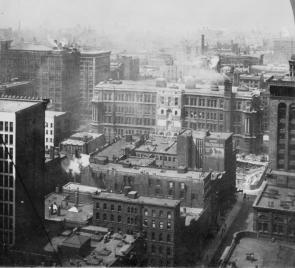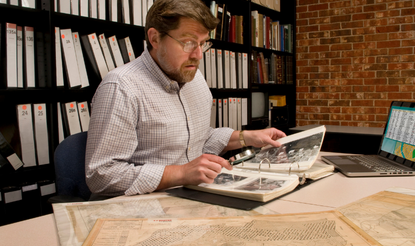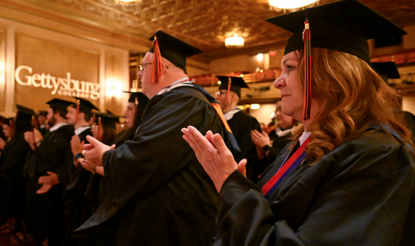The Transnational Nature of the Progressive Era
by Daniel T. Rodgers
 In teaching the era of progressive reforms, it is hard to resist the temptation to focus on the two progressive presidents. Theodore Roosevelt and Woodrow Wilson, figures of enormous power and striking failings, are the sorts of historical characters who can rivet students’ attention. Roosevelt, the avatar of the new masculinity in politics, who remade himself from the weakling he feared he might become into a man of vigor in the American West and on Cuban battlefields, who ended his career shooting elephants in Africa and yearning for command on the Western Front of the First World War, is almost a cartoon representation of "social imperialism" brought to life. Woodrow Wilson, by contrast, seems to be all head and intellect. He was the college professor who cleaned up New Jersey politics and hoped, through military intervention in Europe and through his fight for the League of Nations, to bring the same impulse for order and reasoned arbitration to the world at large. Together they constructed the modern, active presidency we have today.
In teaching the era of progressive reforms, it is hard to resist the temptation to focus on the two progressive presidents. Theodore Roosevelt and Woodrow Wilson, figures of enormous power and striking failings, are the sorts of historical characters who can rivet students’ attention. Roosevelt, the avatar of the new masculinity in politics, who remade himself from the weakling he feared he might become into a man of vigor in the American West and on Cuban battlefields, who ended his career shooting elephants in Africa and yearning for command on the Western Front of the First World War, is almost a cartoon representation of "social imperialism" brought to life. Woodrow Wilson, by contrast, seems to be all head and intellect. He was the college professor who cleaned up New Jersey politics and hoped, through military intervention in Europe and through his fight for the League of Nations, to bring the same impulse for order and reasoned arbitration to the world at large. Together they constructed the modern, active presidency we have today.
Their fights—Roosevelt’s battles with the trusts and monopolies, Wilson’s battle with the League’s opponents, and both with each other in the presidential contest of 1912—are the stuff of every textbook treatment of the Progressive era. Like many political fights, they were not altogether what they seemed. Roosevelt would rather have managed the trusts than bust them. The idea for the League of Nations, which is so often seen as the quintessential product of American moral idealism, was born not in Wilson’s imagination but in the British foreign ministry. The clash between the principles of Roosevelt’s New Nationalism and Wilson’s New Freedom in 1912 had more to do with rhetoric and audience than with major practical differences of policy. But their battles make for effective classroom drama. It is no accident that we so often hustle through the economic and social history of the Progressive era to teach them.
But progressive politics was not born in the White House and it was not born in isolation in the United States. In the late nineteenth and early twentieth centuries, the key laboratories for progressive reform were the states and cities. The First World War and, more permanently, the New Deal and the Second World War were to change all that—nationalizing social and economic politics and pulling primary responsibility for managing the economy and the general welfare into the sphere of Congressional legislation and national administration. But in the years before 1917, it was different. Model bills circulated from state to state, some of which—Wisconsin, most notably—were famously active incubators of social legislation. Still more important as sources of progressive political thought and action were the cities, swelling with immigrant labor and industrial capital on an unprecedented scale in the late nineteenth and early twentieth centuries. Crowded, unhealthy, and often corrupt, they were the plaything of business interests: bribe-proffering contractors for city services; sweatshop owners seeking to wring the maximum possible labor out of their employees; giant industrialists whom no one held accountable for the air and chemical pollution that was built into their profit margins; builders and renters of cheap houses quickly overcrowded with immigrant families; the railroad corporations, whose scale and capital resources were often the largest of all. What we know as the politics of progressive reform began in these contexts.
These local origins, paradoxical as it may seem, connected urban reform politics in the United States with cities continents away: for the world of capital was then, as it is now, transnational. Across Europe, the United States, Latin America, and parts of Asia, the same transformations in work and enterprise overturned older economies and ways of life. The world’s great industrial cities at the turn of the twentieth century were not identical. The filth of Chicago’s streets, visitors reported, was beyond comparison; New York City’s skyscrapers dazzled. But everywhere one saw the same patterns and problems. It was in this context that ideas of economic and social reform slipped quickly from one of the world’s new industrial nations to another.
Some of the initiatives that came together under the label "progressive reform" had to do with a new realism about economics and society. Charles Booth’s block-by-block statistical surveys of the London poor in the late 1880s and early 1890s were quickly imitated elsewhere. W. E. B. Du Bois’s survey of black Philadelphia, the Hull House reformers’ social studies of Chicago, and the big Pittsburgh Survey, still gripping reading a century later, all followed in its mold. Toynbee Hall’s experiment in bringing young Oxford University graduates into residence in London’s slums in the 1880s in an effort to bridge the chasm between the social classes set the model for the American settlement houses. From Paul Göhre’s three months’ immersion in working-class life as a Silesian factory worker, to Annie MacLean’s labors in Chicago’s sweatshops and department stores, to Jack London’s hunt for the real face of poverty in London’s East End, to the more prosaic, routinized forms of social investigation that we now take for granted, a new realism came into social reporting and the social sciences.
In its wake came efforts to encourage forms of new social solidarity capable of resisting the forces that no single worker or family could withstand alone. These, too, circulated far beyond their places of origin: cooperative credit banks on German and Italian models, agricultural cooperative marketing and purchasing associations modeled on the success of Irish and Danish farmers, labor unions and fraternal insurance associations from their origins in Britain, socially active churches eager to move beyond mere charity, and philanthropic endeavors to build model houses for working families or to establish pure milk dispensaries for the children of the urban poor.
The most characteristic reforms of the era, however, turned to government, not to dampen the powers of capitalism but to set limits on its excesses. In this way progressive reforms differed from the socialist movements that were also gathering force in the early twentieth century. Socialists envisioned the exhaustion and replacement of capitalism; progressives hoped to provide capitalism with a more rational and more humane face. That meant inventing new sorts of states with the expert capacity to act fairly and effectively in society and the economy. An important early model was the development of a system of trained factory inspectors in England in the middle of the nineteenth century. One by one American states and European parliaments began not only to put on their books laws limiting the employment of young children, cutting back the eleven- to twelve-hour working days of adult workers, and outlawing particularly dangerous working conditions—the phosphorus poisoning of match workers, the whirling factory belts that, unguarded, could mangle a worker in an instant—but also expanding the capacity of governments to enforce them. The idea of public regulatory commissions, staffed by experts, to set standards in industry and transportation, was sometimes broadcast by its American supporters as the Wisconsin Idea. But it, too, circulated widely across England, Germany, and elsewhere.
The environmental legislation that we associate with the Theodore Roosevelt presidency was another transnational product. The first Forest Service chief, Gifford Pinchot, facilitated the transfer of the idea of public forest ownership to the United States from Germany. Still more important were schemes to promote the conservation of human resources. Systems of labor-dispute arbitration were among these, designed to eliminate the human cost and waste of the fiercely fought labor-owner disputes that erupted across the new economy. So was free public education, a field of progressive reform in which the northern industrial states of the United States were far more advanced than nations elsewhere. The sight of an American public school class, filled with the children of immigrants, as they rose in unison to salute the American flag, was a constantly inspiring sight for foreign progressive visitors.
The movement to open the vote to women worked itself out on the same transnational stage. Between 1902, when nationwide women’s suffrage legislation was enacted in Australia, and 1920, when the Nineteenth Amendment came into effect in the United States, more than a score of nations had granted the vote to women—some in hopes of firming up women’s morale during the First World War, some moved by arguments for women’s equal political rights with men, but more in hopes of enlisting women’s special interest in social problems and social welfare in politics.
In none of these cases did ideas and institutions simply "spread" from one location to another. They moved, rather, through networks of information, travel, transnational friendship, and professional organization, much as conservative ideas and policies move through similar transnational networks today. The international women’s movement is one of the best studied of these networks. It carried not only aspirations but also tactics (the mass suffragist parade, the petition drive, the hunger strike), arguments, and, not the least, the encouragement of achievements elsewhere. Others worked on a smaller scale, like the one-man publicizing work that the English writer William Dawson or the American Frederic Howe gave to pre–World War I German social reforms, or the professionals and amateurs who gathered at the era’s international congresses on everything from child and maternal health, to housing reform, city planning, poverty, factory safety, and old-age and health insurance.
The scope of this work and the breadth of the subjects on which it touched (which I have described more fully in Atlantic Crossings) did not make the nations within these networks the same. Everywhere the structures of society, economy, and politics were differently arranged, often producing strikingly different outcomes. Health insurance came to Germany in the 1880s as a part of Bismarck’s project of weaning the loyalty of the German working class from the socialist party to the empire. It was taken up and reformulated in England by liberals as a citizen’s implied social right. Though strenuously advocated in the United States, the better-organized opposition of doctors and insurance companies postponed it until the Medicare and Medicaid legislation of the 1960s. The force of written constitutions played a part in filtering out those reform ideas that could be implanted with success in the United States—though at the state level, where the key legislative action took place, these were much more flexible than at the federal level. Everywhere transformations and adaptations were the norm, not simple imitation. Looking at Toynbee Hall, Jane Addams saw something different for herself, a settlement house with women at its heart, not men. Looking at the German checkerboard of city-owned public forests, Gifford Pinchot saw a national forest system that could span the continent. Different political pasts and differently structured interests created different possibilities. But the stage across which ideas and institutions of reform moved was as broad as the world of capital itself.
None of this need be remote from today’s students. Help them follow the worldwide influence of Jane Addams, or the transnational career of her friend Florence Kelley, who was Illinois’ first chief factory inspector and later a key figure in the international movement for minimum-wage legislation. Invite them to compare the New York City photographs of Jacob Riis with John Thomson’s photographs of London street life. Even the progressive presidents will make the point. Help them think about the similarities and differences between the projects of Theodore Roosevelt and those of the era’s other dominant social imperialist, Germany’s emperor William II, whom Roosevelt went out of his way to meet in 1910. Help them compare the aims and accomplishments of Woodrow Wilson with those of the early twentieth century’s other great liberal leader, England’s prime minister David Lloyd George, whom both Wilson and Franklin Roosevelt admired. The contrasts, similarities, and connections will all stand out. Transnational reform movements are a fact of contemporary students’ lives, on both the political left (environmental protection, reduction of global warming, and global sweatshop abolition) and the political right (business deregulation, privatization, and curtailment of welfare provisions). Living in a world of capital, ideas, and politics that proclaims itself global, students will be quick to recognize that the Progressive era was, in a different key, global, too.
Daniel T. Rodgers, the Henry Charles Lea Professor of History at Princeton University, is the author of The Work Ethic in Industrial America, 1850–1920 (1978), winner of the Frederick Jackson Turner Prize; Contested Truths: Keywords in American Politics (1987); Atlantic Crossings: Social Politics in a Progressive Age (1998); and Age of Fracture (2011).



